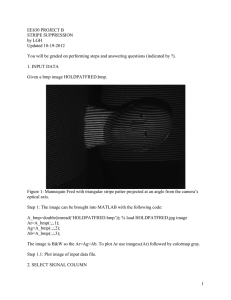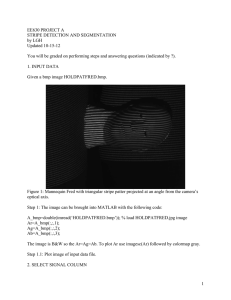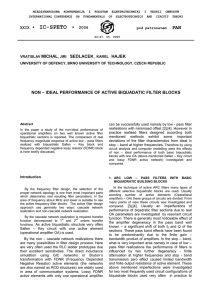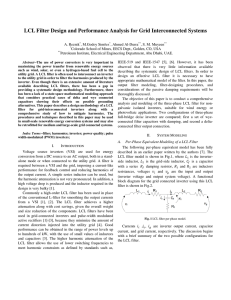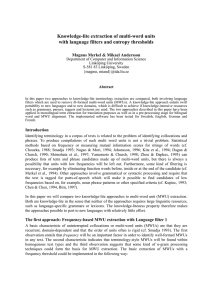Digital Communications and Signal Processing ... 2009
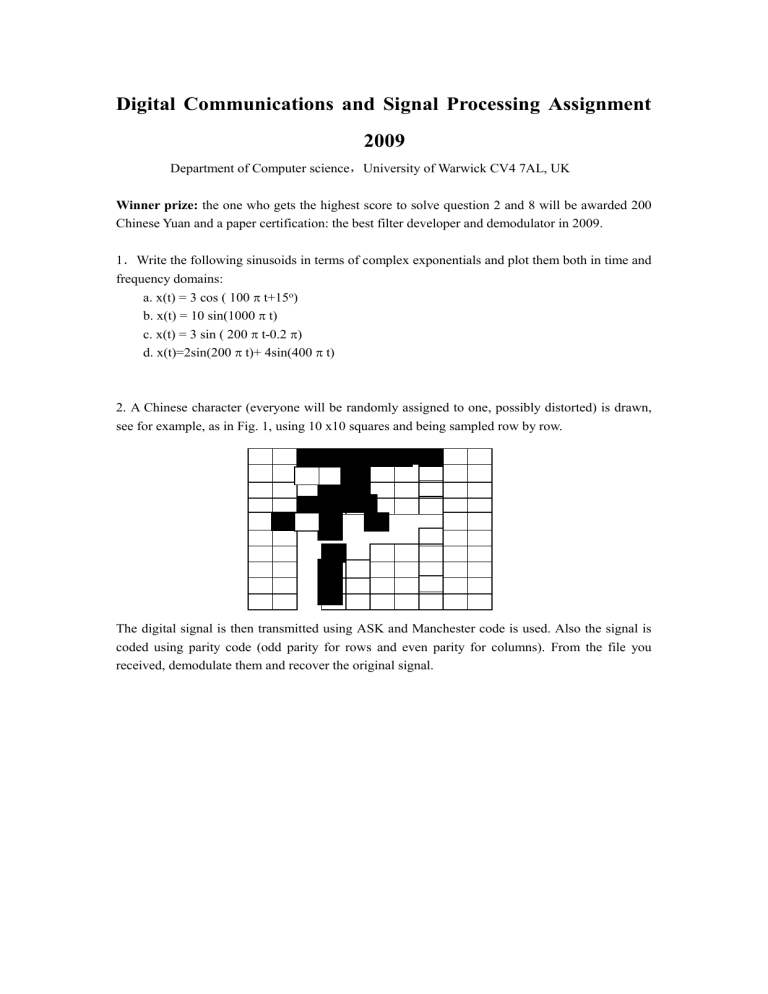
Digital Communications and Signal Processing Assignment
2009
Department of Computer science , University of Warwick CV4 7AL, UK
Winner prize: the one who gets the highest score to solve question 2 and 8 will be awarded 200
Chinese Yuan and a paper certification: the best filter developer and demodulator in 2009.
1 . Write the following sinusoids in terms of complex exponentials and plot them both in time and frequency domains: a. x(t) = 3 cos ( 100
t+15 o ) b. x(t) = 10 sin(1000
t) c. x(t) = 3 sin ( 200
t-0.2
) d. x(t)=2sin(200
t)+ 4sin(400
t)
2. A Chinese character (everyone will be randomly assigned to one, possibly distorted) is drawn, see for example, as in Fig. 1, using 10 x10 squares and being sampled row by row.
The digital signal is then transmitted using ASK and Manchester code is used. Also the signal is coded using parity code (odd parity for rows and even parity for columns). From the file you received, demodulate them and recover the original signal.
3. Assume we have event {N, R} with probability P(N)=0.2 and P(R)=0.8 and the sequences as shown in Table 1 are coded using the Huffman code. Fill in Table 1 and explain in details how you created the Huffman tree and the results you obtained. Commend on the average code length and entropy.
Sequence NNN
Probability
Codeword
NNR NRN RNN RRN RNR NRR RRR
Codeword
Length (in bits)
Weighted code length
Entropy
Table 1.
4. A second order digital filter can be described by means of the following diagram (Fig. 2).
Derive the state equations of the above filter.
Fig. 2.
5. The pole-zero specification of a digital filter is as follows:
Pole
1/2 + j /2, 1/2- j /2
Zero
-1, -1
Its gain at d.c. is |H(0)|=1. Determine the z-transfer function of the filter and hence the filter coefficients (i.e. a n
and b n
where n=0,1,2).
6. Write a subroutine in conventional programming language (e.g., C, Pascal, Matlab or Java) to implement the filter. It should have x(n) and the filter coefficients (i.e. a
0
, a
1
, a
2, b
1
and b
2
) as input parameters, and y(n) as the output parameter.
7. Use a random number generation subroutine to generate zero mean additive noise
(n) of variance 0.3 and add it to the sinusoid x(m,n)=cos(mn) to produce noisy sequences g(m,n) for m=1,5, i.e.
E
(n) = 0
E
(n) 2 = 0.3 g(m,n) = x(m,n)+
(n)
Calculate the mean square error
Ee m
M n
0
1 x m n
g m n
2 where M=40.
8. Download a noisy sound file from http://www.dcs.warwick.ac.uk/~feng/teaching/dcsp.html
.
Using a filter designed by yourself to clean up the noise as much as possible. Write down in details on how you do it and submit the final result to Dr. Enrico Rossoni.
Attempt all parts and submit a report that should include the program listings (with comments).
Please visit the following web site for a submission cover sheet: http://www.dcs.warwick.ac.uk/undergraduate/cover.html
Completed report should be submitted to the filing cabinet in the Terminal Room CS006 in the
Computer Science Department before 1200 hour on Wednesday (week 20).






